The world of nature is full of amazing animals that have been created in a unique way. From the smallest animals to the biggest, a wide range of animals exist all over the world.
We will talk about the top 10 largest birds of prey in the world and what makes them unique and awesome. We are sure you will love these birds.
Birds of prey are some of the coolest animals in the world. They have different names and a variety of characteristics, but it all starts with the name ‘pierce’.
These birds are able to pierce their body and reach a human eye. Their hunting ability is what makes them so unique.
And the fact that they are able to stay alert and be ready to attack whenever their prey comes close. There are several categories of birds of prey and each one of them comes in various different sizes.
They all have unique features and abilities, and we are going to learn about the most powerful and most dangerous birds of prey in the world.
The Top 10 Largest Birds of Prey Lists
Andean Condor (Vultur Gryphus)

Scientific Classification of the Andean Condor
- Scientific Name: Vultur Gryphus
- Kingdom: Animalia
- Phylum: Chordata
- Class: Aves
- Order: Accipitriformes
- Family: Cathartidae
- Genus: Vultur
- Species: Vultur Gryphus
- Common Name: Andean Condor
Andean Condor is a large, brown bird found in the highlands of central and western South America.
It feeds on lizards and small animals, especially rodents, while soaring on thermal updrafts at elevations above 1,600 m. They nest on cliffs and steep slopes.
The male is distinguished by a prominent red throat patch, a white belly, a narrow red bar on each side of the dark brown body, and small light spots on the flanks.
The adult female lacks these, except for a narrow red spot on each side. Both sexes have white head and wing feathers, and in the male, the tail and upper back also have light spots.
In the adult male, the spots are edged with black, in contrast with the light spots on the adult female. When young, immature birds lack the throat spot and tail markings.
The upper mandible is hooked in the male, like a jay or mockingbird. The wingspan is 2.8–3.4 m. The length is 1.3–1.5 m.
The tail is 2.2–2.4 m. The body weight is 2.7–6.2 kg. The flight is somewhat clumsy. The call is a thin, low quacking.
Harpy Eagle (Harpia Harpyja)
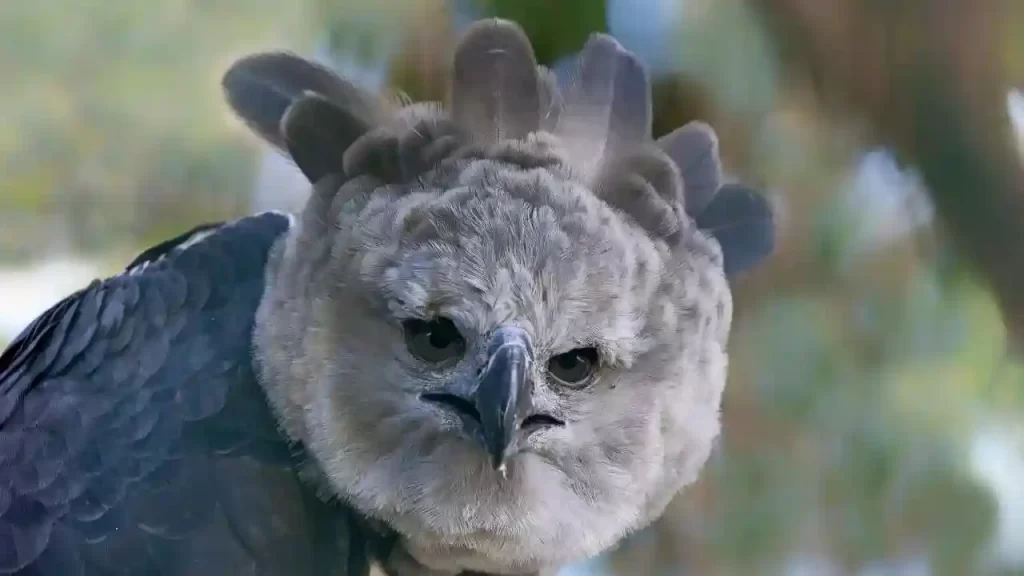
Scientific Classification of the Harpy Eagle
- Scientific Name: Harpia Harpyja
- Kingdom: Animalia
- Phylum: Chordata
- Class: Aves
- Order: Accipitriformes
- Family: Accipitridae
- Subfamily: Harpalinae
- Genus: Harpia
- Species: Harpia Harpyja
- Common Name: Harpy Eagle
Harpy Eagle is classified in the order Falconiformes, and has been classed as a member of the coraciiform family, Accipitridae, which includes the harpy, harrier, kite, and vulture.
The species is believed to be closely related to the genera Aquila, Asturina, and Buteo, though some authors place it closer to the genus Accipiter.
It is a solitary bird with a large range and a low population density. The harpy eagle is an extremely large bird, the largest known member of the accipitridae family.
The species is mainly blackish-grey with some bright chestnut. Both sexes are similar, but females are heavier, with adults weighing up to.
The eagle’s appearance is somewhat similar to the white-tailed eagle. It has a short tail that tapers to a point. The legs are long and powerful, and are used to propel it through the air.
The long legs allow the harpy to catch its prey out of the air. It is a medium-sized eagle, with an estimated wingspan of , and a height of.
Females are slightly larger than males, with an estimated weight of. The head is quite large and is blackish-grey with a black face mask.
It has two large, circular, yellowish-orange, eye-spots and a large, black, sickle-shaped tail. These are not present in immature harpy eagles.
The wings are short and broad, with a white-tipped blackish-grey primary wing, and a blackish-grey secondary wing, which is not visible when perched.
The legs are very long and slender, and it walks upright. The bill is dark brown, and the feet are also dark brown.
Immature birds may show some pinkish-brown coloration on the neck. The harpy eagle has a large hooked beak that resembles a hawk’s bill.
This eagle has a strong talon that the bird can use to catch and hold a large variety of prey items.
The talons are long and slim, and are much larger than those of the caracara, which is the largest member of its genus. The feet are also very long, and the toes are rounded and webbed.
Steller’s Sea Eagle (Haliaeetus Pelagicus)

Scientific Classification of the Steller’s Sea Eagle
- Scientific Name: Haliaeetus Pelagicus
- Kingdom: Animalia
- Phylum: Chordata
- Class: Aves
- Order: Accipitriformes
- Family: Accipitridae
- Genus: Haliaeetus
- Species: Haliaeetus Pelagicus
- Common Name: Steller’s Sea Eagle
Steller’s Sea Eagle, sometimes spelled “Shark Eagle”, is a large seabird and is the only living species in the genus, Haliaeetus.
This species, found in open waters all over the world, is easily identified by the large rounded head and the white band around the eyes.
It has a dark back and sides and a white belly, and is often called “bald eagle” in North America.
Adult Sea Eagles are often seen soaring overhead during migration and wintering, and are frequently mistaken for vultures by people on the ground.
The adult male will frequently dive in a vertical attack on large prey, including seals, fish and cormorants. Adults have a wingspan of up to 1.8 metres and weigh up to 2.3 kilograms.
Sea Eagles are generally long-lived, with few records of individuals older than 60 years. On land the breeding season is from October to February.
But the nest is not occupied until the second or third year. Sea Eagle may be the best-known eagle species in the world.
The adult female incubates the four to six eggs for about 31 days and will stay with the young for about 50 days. She then takes up to 30 months to raise a young pair.
This bird is sometimes referred to as “bald eagle”, “sea eagle”, “sea hawk”, “shark eagle”, “white hawk”, “pelagic hawk” or “pelagic eagle” (sometimes all in one entry).
In fact, both the genus name and species name come from the Greek words haiaio (ἁαιόω) “to bring down” and eidos (ἔίδος) “form”. The Latin word “haliaeetus” (ἁλιαῖτος) means “sea bird”.
The adult Sea Eagle, found in the northern hemisphere, is a large soaring bird with a rounded head, a hooked beak and a large white patch over each eye.
When viewed from the side the white band around the eyes is visible. The adult male will dive at anything it can catch, including seals, fish, and cormorants.
When diving, the long neck is held straight out behind, and the short, stout legs are spread out far in front of the body, which is then curled up tightly on itself.
The wings are held straight and the tails are held stiff, in the position for gliding.
The long legs are used for catching the prey in the water or while riding currents, as the feet are protected by small wing-like webbing. The feet are yellow and covered with spines.
The feet are also used as a rudder to control speed and altitude during gliding. The feet are used to control speed and altitude when gliding. The wings may be folded into a tight position for gliding.
The bill is hooked with a strong beak, which is strong enough to break the spines of larger prey. The tail is also used for propulsion. The plumage varies between the breeding and non-breeding season.
In the breeding season the adult male’s plumage consists of white patches on the head and neck, with a black cap, a bluish-black back and whitish-grey flight feathers and dark tail feathers.
In the non-breeding season the adult female’s plumage has grey upperparts and white underside. She also has a light grey bill and brownish-white feet.
The tail is dark and the adult male has blackish legs and feet. The juvenile, after hatching, has a dark body with white streaks on the back and a dark tail. The legs are black and the feet are yellow.
California Condor (Gymnogyps Californianus)
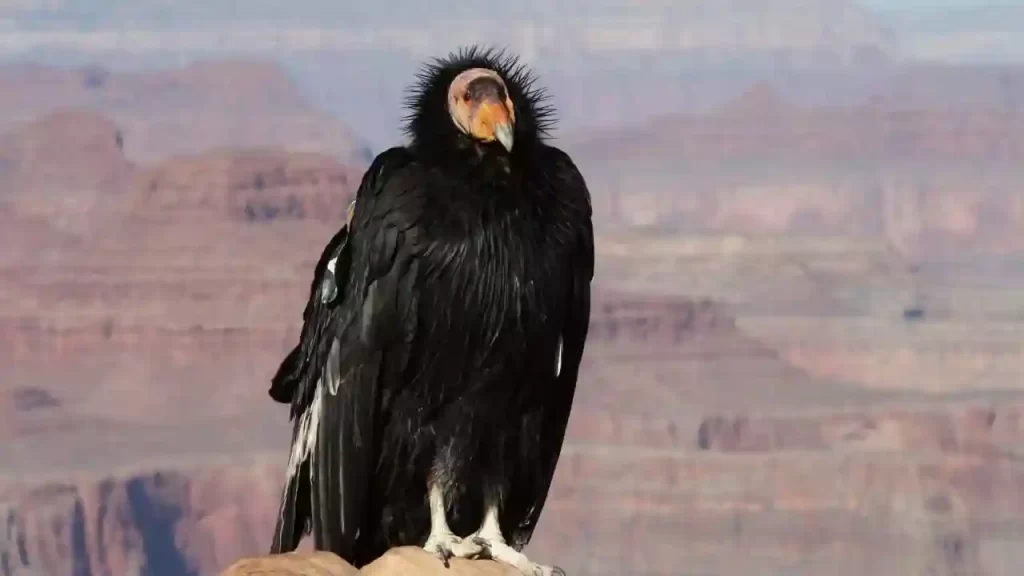
Scientific Classification of the California Condor
- Scientific Name: Gymnogyps Californianus
- Kingdom: Animalia
- Phylum: Chordata
- Class: Aves
- Order: Accipitriformes
- Family: Cathartidae
- Genus: Gymnogyps
- Species: Gymnogyps Californianus
- Common Name: California Condor
California Condor is the largest flying bird in the world. It gets its name from the fact that it roams far and wide across the state and is well-known for its ability to fly thousands of miles.
And migrate to the Southwestern United States. In the 19th century, they were even found as far north as Vancouver Island.
Their habitat is the Sierra Nevada Mountains, which gives it the name California Condor. Because of this, it is also sometimes called the Sierra Condor.
This magnificent bird weighs anywhere from 1 to 3.5 kg (2.5-8.2 pounds) and has a wingspan of up to 1.3 metres (4.2 feet). It is one of the largest land birds in North America.
The California Condor eats fish, small animals, and a wide variety of foods, depending on where they can find them.
The California Condor is about 9 cm long (3.5 inches) and weighs from 1 to 3.5 kg (2.5-8.2 pounds). It has a long, thin beak with a fleshy tip and teeth to eat meat.
When it takes a larger animal, it pecks at the eyes and sometimes the ear and then swallows the whole thing.
The male and female California Condors look almost the same, but they have two small patches of feathers on the chest and shoulders of the female that don’t appear on the male.
It can’t take long enough breaks to do anything. Instead, it spends all day flying and eating.
It’s a strong flyer and it’s known to fly hundreds of miles, sometimes up to 3,000 miles or more, with no problem.
This means that they get to places where there are fish to eat and other animals to catch. Their flight is often erratic and they are prone to accidents.
However, they can fly about 100 mph or more and they are able to recover from their mistakes. In fact, sometimes they’ll even fly back to the same place.
The female lays one egg at a time, which usually takes three months, and it weighs around 875 grams (2.3 pounds).
The egg is sometimes buried in the dirt and sometimes it can be on a log or nest of sticks in a tree. This nest is a little wider than the egg and is made of twigs or sticks.
The California Condor is a solitary creature and the females build their own nests, while the males usually live in groups called territories.
The California Condor is listed as endangered by the IUCN (International Union for Conservation of Nature) and for good reason.
Because of human disturbance, they have been having a hard time surviving. Also, with their large territories, they have a difficult time surviving, since they need a large amount of space.
When they’re on the move, they often get caught in traps and killed. The government has worked hard to protect them. One of their main ways is by setting aside land as a reserve to protect them.
Another problem is that there aren’t enough of them to keep them from going extinct. They need a large area and they need to be left alone. It is up to the people to take care of the population.
Cinereous Vulture (Aegypius Monachus)
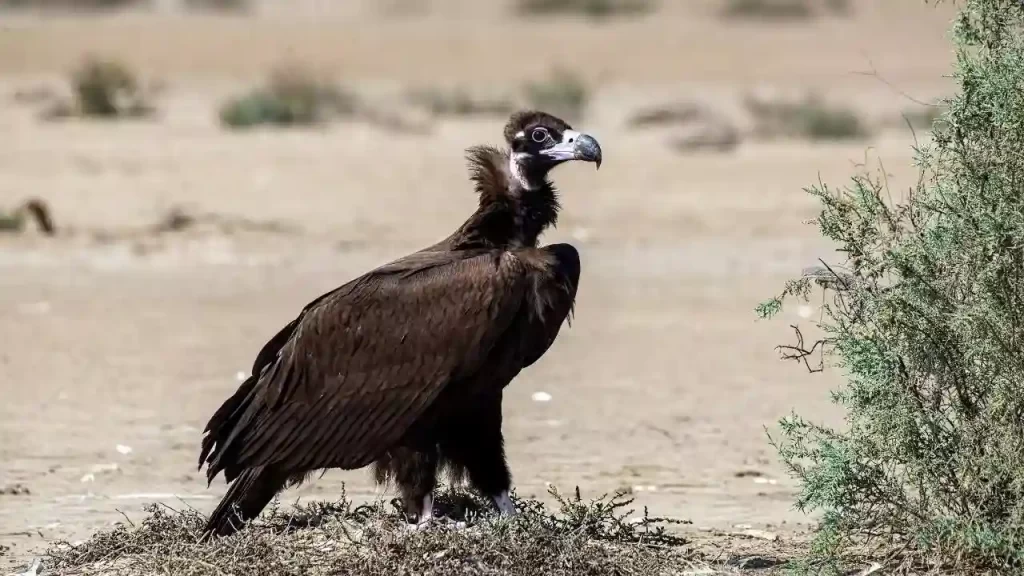
Scientific Classification of the Cinereous Vulture
- Scientific Name: Aegypius Monachus
- Kingdom: Animalia
- Phylum: Chordata
- Class: Aves
- Order: Accipitriformes
- Family: Accipitridae
- Genus: Aegypius
- Species: Aegypius Monachus
- Common Name: Cinereous Vulture
Cinereous vulture is one of the largest Old World vultures. Males are larger than females. The bird is dark-brown to brown, with the legs and head paler than the upperparts. It has white underparts.
The tail is long and slightly forked. Cinereous vultures are distributed in eastern and southern Africa, including east Africa, South Africa, Lesotho, Swaziland, Mozambique, and Zimbabwe.
In Kenya and Tanzania, it is common in the Rift Valley. It is rare in Uganda. In central and southern Africa, it is widely distributed, although it is rare in Angola, Namibia, and western and central Africa.
They inhabit forests, bushes, and cultivated areas. The Cinereous vulture is a large, long-tailed, black-and-white bird. Its wings and tail are relatively long.
The head is pale, and the face has a white ring around the eye. The neck is short and heavy. The tail has a short white tip. The legs are dark.
The back and breast are dark brown with white streaks, and the underparts are white. It has a small red comb on the head.
The Cinereous vulture is about 45 inches (114 cm) long and weighs about 11.5 pounds (5.5 kg). Its wingspan is about 50 inches (126 cm). The tail is about 40 inches (102 cm) long.
The bird’s beak is black. Its legs are black. The eyes and cere are black. The Cinereous vulture’s call is raucous, and it gives a low, mournful hoot.
It often cries in distress or when its food is not readily available. Courtship begins with a raucous cry. A male may mount the female from below. The male may also mount the female from the side.
The courtship may take place on a perch or other place near a perch or tree. The male may fan his tail and flap his wings to attract the female. The pair often preens each other.
After copulation, the female lays a few white or brownish-white eggs. She stands on the nest while the male does the feeding. The female remains in the nest until she is ready to incubate the eggs.
She may sit and crouch over the nest for up to 15 minutes, and she may sit for 15 hours or more. If an egg is lost or cracked, she immediately lays another one. The incubation period is 26 days.
When the chicks hatch, the female continues to stay near the nest. The chicks are very hungry and eat a lot of food. The chicks leave the nest at about five months.
Adult Cinereous vultures eat carrion and other meat. They also feed on eggs and chicks and may feed on live prey such as snakes and rodents.
They often wait near the nest for dead snakes, rodents, and birds that are found. In this way, they may eat small snakes and rodents, such as rats and mice.
To catch rats, a vulture sometimes climbs a high tree to attract the rats with its cries. The vultures eat mice by sitting on a low branch where they can reach the mice.
When hunting for carrion, a vulture may use its beak to pierce the skin of its prey and take small amounts of blood and other fluids.
The birds may stand on a branch with their feet on the ground and pounce on a sleeping animal.
Martial Eagle (Polemaetus Bellicosus)
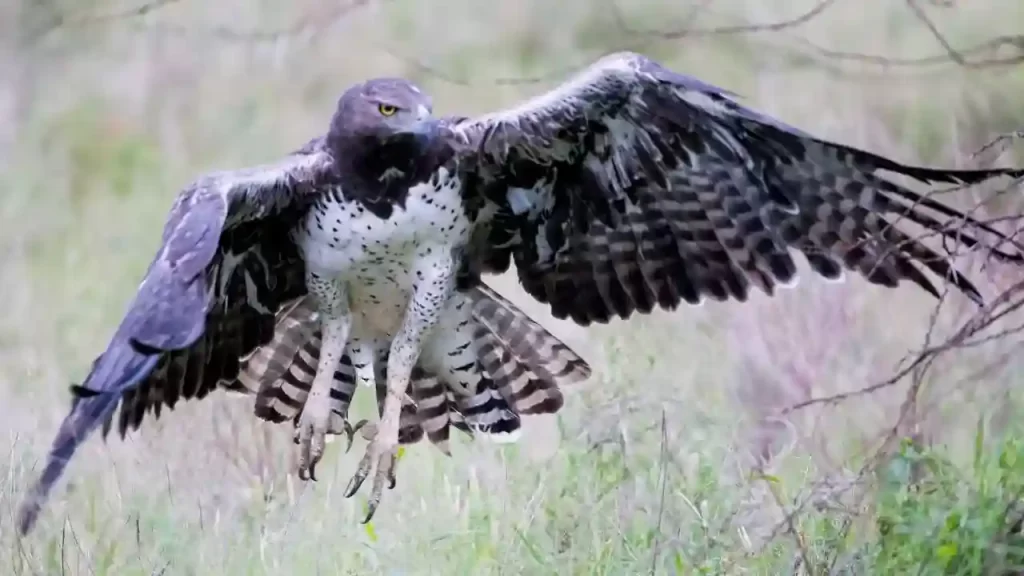
Scientific Classification of the Martial Eagle
- Scientific Name: Polemaetus Bellicosus
- Kingdom: Animalia
- Phylum: Chordata
- Class: Aves
- Order: Accipitriformes
- Family: Accipitridae
- Genus: Polemaetus
- Species: Polemaetus Bellicosus
- Common Name: Martial Eagle
Martial Eagle is a large, bulky and powerful raptor which is widely distributed throughout much of Africa. The size of the adult varies, but is often over two metres long and weighs several kilos.
The adults of these birds are a rich brown colour with a glossy blackish-grey head. The feathers of the bird, particularly the wings, can be seen as a large patch of feathers on a black background.
Juveniles are overall brownish-grey with a mottled appearance, but they have some markings in their plumage as they grow.
Martial eagles are known for their size, strength and their impressive feathers. The martial eagle’s most distinctive feature is its exceptionally large, broad and stiffly-barred tail.
As well as its tail, the bird’s head is distinctive, the dark eye being prominent and the head shape being large, with short facial feathers.
The adult eagles weigh up to five kilograms (11 lb) and have a length of more than 2m.
The wingspan can reach up to 2m, while the tail has an average length of 1.5m and the legs are powerful and long.
The martial eagle’s prey includes small mammals, reptiles, amphibians, fish, waterfowl, monkeys, birds and any other prey which it can overpower. The bird usually preys on its prey in trees.
Due to the eagle’s incredible strength and agility, it can pick out an animal of any size and can easily catch monkeys, fish and birds weighing up to 35 kilograms.
To achieve this, the eagle perches on a branch and waits patiently for its prey to pass. As soon as the prey comes near, the eagle launches itself at its prey.
The strong legs of the bird ensure that it has enough power to smash the prey to pieces in its powerful talons, so that it can swallow the whole in one bite.
Because the eagle has very large and powerful feet, it can stand on a branch for great lengths of time and its strong feet are its only means of balancing and moving around in its territory.
To stay safe from predators and to hunt, the eagle roosts overnight in trees and in caves. Martial eagles are most often found in open habitats, with some forests and scrubland.
But they can also be found in some forests or woodland. They are sometimes found along mountain ranges, or near rivers and lakes.
When the male bird starts breeding, it needs to establish his territory. The male will establish his territory at the time of the spring rains.
The territorial boundaries are marked by a display flight and, if necessary, other displays.
The male eagle stands on a low branch with a high rate of movement and flies up and down the tree until the female bird comes near.
The male bird then calls out and flies into a tree, where he sits and displays. This display typically lasts for about 10 minutes.
The female eagles may choose to join him, but the courtship display also includes displaying the white patches on the throat of the male.
If the female stays away, the male eagle will call out and fly around the tree. If she ignores him, the male eagle will sit in the tree or on the ground.
A female eagle will mate with as many males as she wants to. After mating, the female eagles will sit alone in a tree and make a ‘call’ to inform the rest of the eagle community about her new mate.
Crowned Eagle (Stephanoaetus Coronatus)
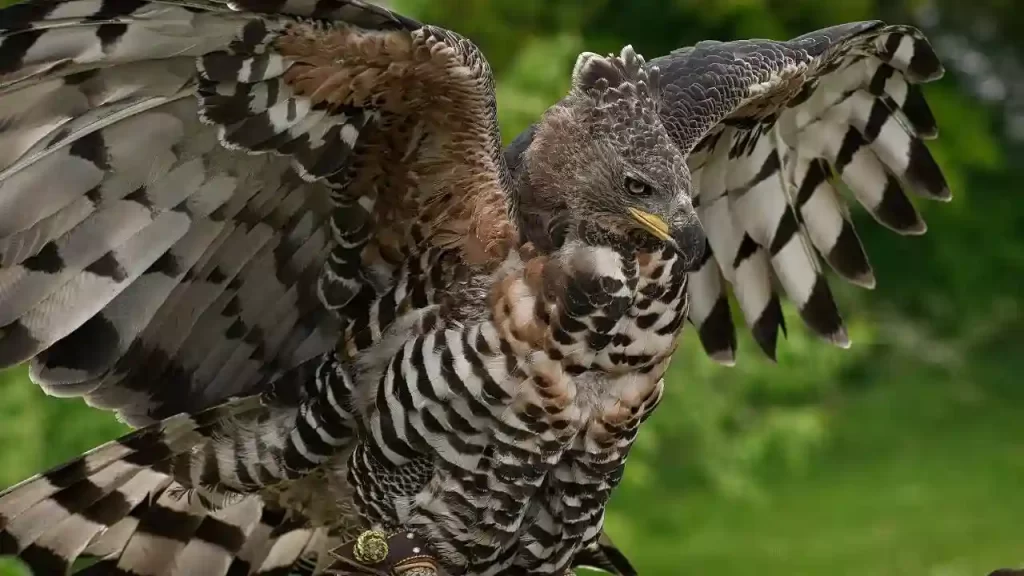
Scientific Classification of the Crowned Eagle
- Scientific Name: Stephanoaetus Coronatus
- Kingdom: Animalia
- Phylum: Chordata
- Class: Aves
- Order: Accipitriformes
- Family: Accipitridae
- Genus: Stephanoaetus
- Species: Stephanoaetus Coronatus
- Common Name: Crowned Eagle
Crowned Eagle is an eagle-like species with beautiful white spots on their wings and the head. It is one of the most active birds among those found in the Russian taiga, usually in the air and hunting.
It is a bird of prey that hunts rodents and the occasional large bird. Their diet also includes hares and voles. It is an omnivorous species.
Some birds have white spots on their plumage, such as the golden eagle and white-tailed eagle. However, crowned eagles do not have a yellow tinge to their feathers and tail.
The breeding habitat is a taiga habitat near the lakes and rivers, such as the Yenisei River in Siberia. Although they are large birds, crowned eagles measure 42-48 cm (16.5-18.5 inches) long.
They are about 55-58 cm (22-23 inches) high and weigh 15-18 kg (33-40 pounds). They are quite stout, with a strong beak and feet. They have a brownish-grey head, back, wings, and tail.
Their upper parts are white, while the under parts and tail are a rich brown. Their black wings have white spots on the primaries and a large white patch on the primaries.
Their white tail is almost the same colour as the white spots. The legs are bluish-grey. The crowned eagle is found along the coast and in the taiga. They are found in the Amur-Bukhara subregion.
In the North, they are found in the Taymyr peninsula and North-western Siberia. In the North-east they are found in the Russian Far East.
In the Far East, the eagle is distributed from the Amur to the Pacific Ocean. It can also be found in the southern portion of the Kamchatka Peninsula and south-western Alaska.
In Mongolia and Korea, they are found around the western and northern parts of Lake Baikal. The crowned eagle is found in taiga in the far north.
In summer, they are found near rivers, lakes, and ponds. They mainly feed in the taiga. At the beginning of winter, they move to the lake edge. When winter ends, they move into the higher taiga.
During the summer, they are found up to the subalpine zone and higher. There is a difference in food habits between birds near lakes and birds near rivers.
They hunt on the lakeside and near the rivers. The crowned eagle is a bird of prey that hunts rodents. It is often seen around lakes in summer. They hunt in pairs.
Bearded Vulture (Gypaetus Barbatus)
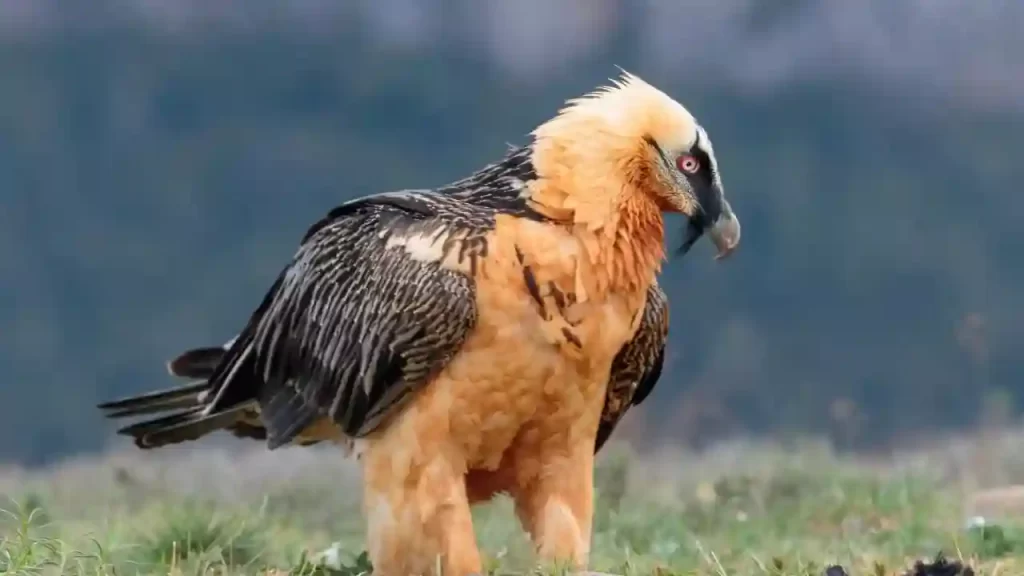
Scientific Classification of the Bearded Vulture
- Scientific Name: Gypaetus Barbatus
- Kingdom: Animalia
- Phylum: Chordata
- Class: Aves
- Order: Accipitriformes
- Family: Accipitridae
- Genus: Gypaetus
- Species: Gypaetus Barbatus
- Common Name: Bearded Vulture
Bearded Vulture is a heavy, bird of prey. It is found in all kinds of open countries. Its length is about 50-65 cm and its weight is about 14 kg. The beak is horny and its length is 12-16 cm.
It has a yellowish-grey skin. The legs are short and thin. It is a species which lives in small groups. Its plumage varies according to the season and the sex of the bird.
The adult male has a brown head, neck, body, legs and tail. Its chest and belly is a white-grey colour. The female of the Bearded Vulture has a different colouring from the adult male.
It has a white head, neck, chest and belly. Its body is completely white. The Bearded Vulture is not shy and always lives near human habitats. Its eyes are huge.
They have a sharp vision and the Bearded Vulture looks for food which is a prey for the Bearded Vulture. It feeds on animals that are found in human habitats.
The Bearded Vulture feeds mostly on birds, but also eats large insects, reptiles and small animals. The Bearded Vulture lives in areas with open landscapes such as plains, desert and grasslands.
In the winter, the Bearded Vulture migrates in different parts of Africa. It has a nesting season from April to November. Its nest is located in low shrubs or cliffs. It lays a single egg.
It takes from 3 to 6 days to hatch. The Bearded Vulture feeds mainly on small vertebrates which are killed by using their powerful beaks. The Bearded Vulture is an important partner in ecosystems.
They remove old and dead animals and thus prevent the spread of diseases in human habitats. The Bearded Vulture builds its nest in a low shrub or cliff.
It usually lays one egg which weighs about 50-100 grams. It takes 6-7 days to hatch the egg. The beak of the nestling is strong enough to break the egg and get food from its shell.
The Bearded Vulture lives about 2 years. During this period, it eats many different foods. The Bearded Vulture has a long beak that helps it to catch prey. This helps it to get good nutrition.
The beak is not a threat for the health of the birds. It can not be infected. If there is an infection, the birds die because they are unable to swallow food.
Philippine Eagle (Pithecophaga Jefferyi)
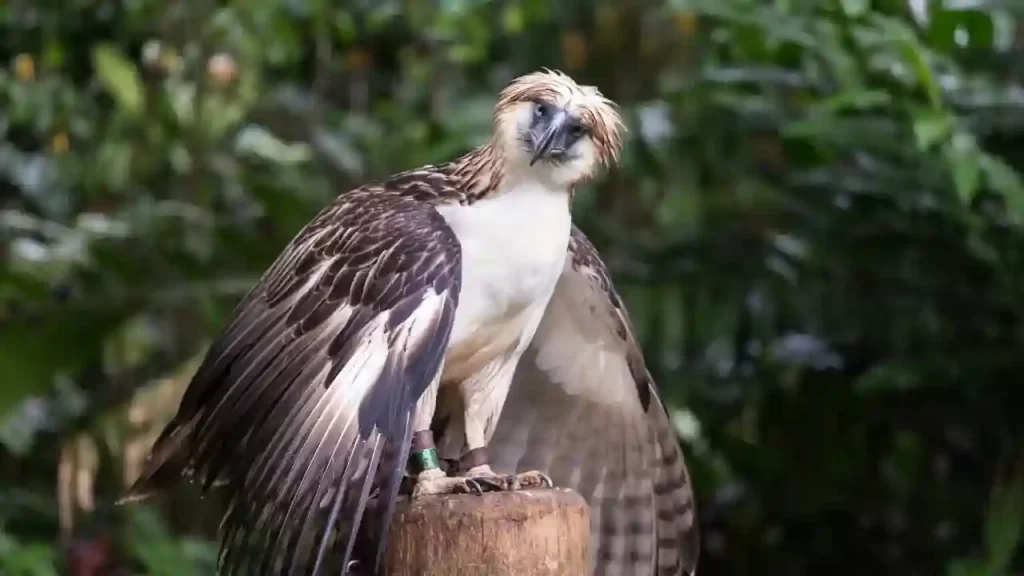
Scientific Classification of the Philippine Eagle
- Scientific Name: Pithecophaga Jefferyi
- Kingdom: Animalia
- Phylum: Chordata
- Class: Aves
- Order: Accipitriformes
- Family: Accipitridae
- Genus: Pithecophaga
- Species: Pithecophaga Jefferyi
- Common Name: Philippine Eagle
Philippine Eagle is the largest eagle in the Philippine archipelago and is considered to be one of the highest living bird species in the world.
The bird is native to the Philippine archipelago, where it is widely found, except on Mindanao. It is mainly found in lowlands of the Visayas, Mindanao and Sulu provinces.
Philippine eagle is the only living species of the genus Pithecophaga of the family Accipitridae of the order Accipitridae.
The genus Pithecophaga is one of the largest genera of eagles and most eagles are highly sexually dimorphic, with the female eagle being much larger than the male.
The average length of the Philippine eagle can reach 3 m (10 ft) and it weighs in at a hefty 100 to 200 lb. The Philippine eagle’s diet is mostly composed of mammals and fishes.
However, this bird is known to be highly adaptable and a successful predator. It may even attack and eat the locally introduced rats.
The Philippine eagle is an arboreal eagle living in the tropical areas of the Philippines. They mainly dwell in the lower elevation areas, from 0 to 2,500 feet (700 m) above sea level.
The species generally nests on a tree in a fork, a cavity near a tree, or in a mangrove swamps and forest.
They are opportunistic and will exploit any available habitat, but they tend to avoid heavily wooded areas.
The Philippine eagle is a highly successful predator that specialises in preying on small to medium-sized animals, including mammals, birds, and reptiles.
Some of its prey includes bats, shrews, birds, rodents, frogs, lizards, monkeys, and even small snakes. Despite being a top predator, the Philippine eagle has been known to also eat fishes.
The Philippine eagle is found in most parts of the Philippines. The largest population of this eagle can be found in the provinces of Southern Leyte, Eastern Samar, and Negros.
Some of the populations are found in Palawan and nearby smaller islands. Most of the recorded sightings of this eagle are in Bohol and surrounding areas.
However, the population of this eagle is rapidly declining due to the introduction of invasive rats and the illegal activities that are being done in forests.
The Philippine eagle is a very large, robust bird with a large head, large wings, a long neck, strong legs, and claws.
Its social behaviour is highly complex. It is a highly territorial animal and has the tendency of attacking intruders to defend their territory.
Its nesting colonies can be large, and the nests are generally built in trees and in forests, mangrove swamps, or even inside waterfalls.
Lappet Faced Vulture (Torgos Tracheliotos)

Scientific Classification edit Lappet Faced Vulture
- Scientific Name: Torgos Tracheliotos
- Kingdom: Animalia
- Phylum: Chordata
- Class: Aves
- Order: Accipitriformes
- Family: Accipitridae
- Genus: Torgos
- Species: Torgos Tracheliotos
- Common Name: Lappet Faced Vulture
Lappet-faced vulture is a large (35–40 cm), long-legged bird of prey native to Central Asia, Mongolia, and South Siberia.
The Lappet-faced vulture, as the name suggests, has lappets on the side of its head, which are used to pick up food, such as the head of a dead animal.
It is believed that all vultures are dichromats, meaning that they have only two cone types. But the Lappet-faced vulture is trichromatic, meaning that they have three.
Lappet-faced vultures have three types of cones in their retina, which they call L, M and S cones. Each cone contains a single type of pigment which makes up the vulture’s primary colour vision.
(The three primary colours for a trichromat are blue, green, and red). In humans the three types of cones are L (or “long wavelength sensitive”), M (“middle wavelength sensitive”).
And S (“short wavelength sensitive”). L is most sensitive to blue light, M to green light, and S to red.
A vulture’s ability to see all three types of cones is what allows it to recognize its prey by colour and is vital for hunting and foraging.
The bird’s cone type L is most sensitive to blue light, and the type M to green light. When it looks at an object.
The L and M cones send signals to the eye that results in the perception of an object’s colour, while the signal from the S cones is received when the vulture turns its head.
This is how the bird’s brain is able to recognize the object colour (i.e. its prey) by the cone types that it is looking at.
The colour “recognition” is important because many vultures eat things that are not the colour of their eyes.
What the vulture sees changes when it turns its head, depending on which part of its visual field it’s looking at.
Researchers at the University of Maryland have studied the bird’s eye movement and shown that the bird’s brain knows where it is when it looks up and when it looks down.
I hope you enjoyed our article about the top 10 largest birds of prey in the world. If yes, then do share these articles with your loved ones, family, and friends.
Thank you for Reading!

